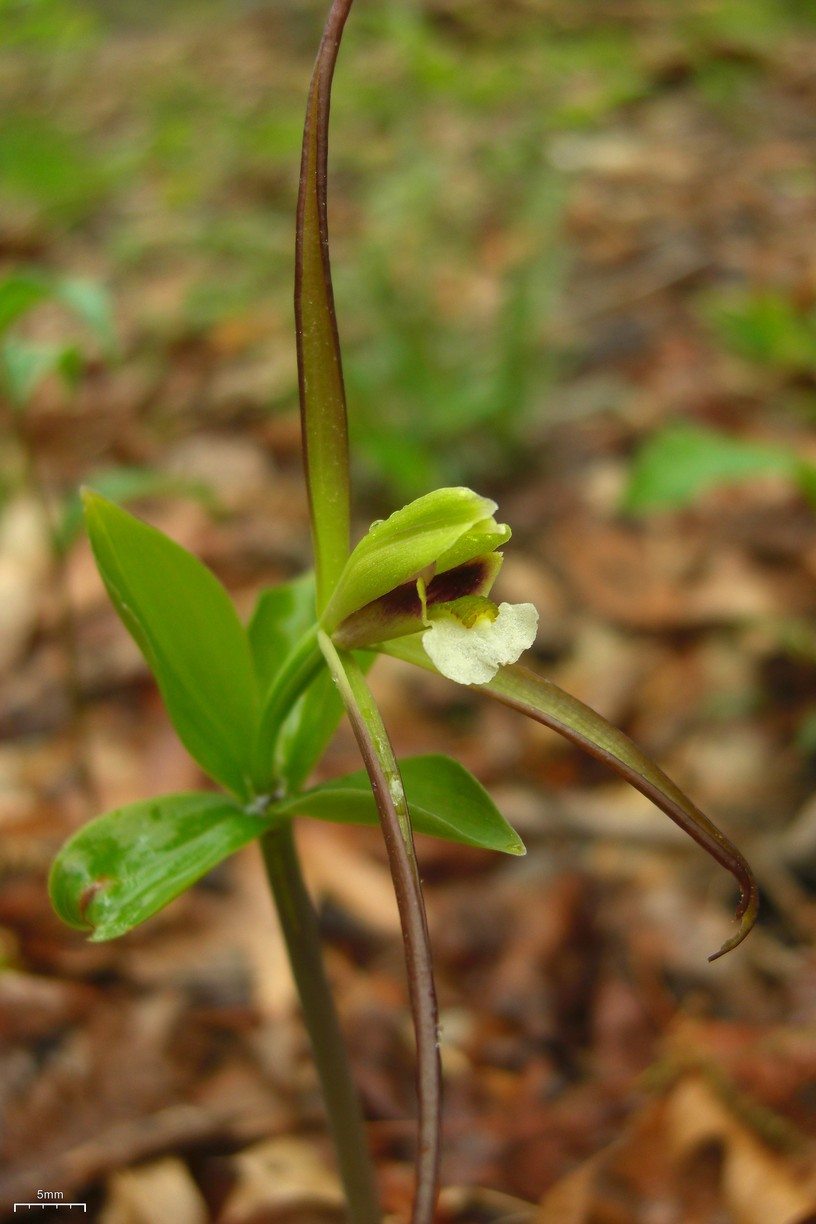What Is A Whorled Pogonia – Learn About Whorled Pogonia Plants


There are over 26,000 varieties of orchid known in the world. It is one of the most diverse plant groups with representatives in almost every corner of the world. Isotria whorled pogonias are one of the many unique varieties. What is a whorled pogonia? It is a common or threatened species that you are not likely to find for sale, but if you happen to be in a forested area, you might run across one of these rare, native orchids. Read this article for some fascinating whorled pogonia information including its range, appearance, and interesting life cycle.
Whorled Pogonia Information
Isotria whorled pogonias come in two forms: the large whorled pogonia and the small whorled pogonia. The small whorled pogonia is considered rare, while the larger form of the plant is quite common. These woodland flowers thrive in shade, partial shade, or even fully shaded areas. They produce unique flowers that are not so much showy as just plain unusual. One strange bit of whorled pogonia information is its ability to self-pollinate. Isotria verticillatais is the larger of the species. It has a purplish stem and five whorled leaves. Leaves are green except for the underside which may be bluish-grey. Most plants produce 1 or 2 flowers with three yellowish-green petals and purple-brown sepals. Blooms are about ¾ inch (2 cm.) long and eventually produce an elliptical fruit with thousands of tiny seeds. While not a brilliant color combination like many classic orchids, its very strangeness is alluring. Plants in the group Isotria medeoloides, the small whorled pogonia, are only about 10 inches (25.5 cm.) in height and have greener flowers with lime green sepals. Bloom time for both is between May and June.
Where Does Whorled Pogonia Grow?
Both species of whorled pogonia plants are native to North America. The larger pogonia is common and can be found from Texas to Maine and into Ontario in Canada. It is a wet or dry woodland plant that may also appear in boggy regions. The rare small whorled pogonia is found in Maine, west to Michigan, Illinois, and Missouri and south to Georgia. It also occurs in Ontario. It is one of the rarest species of orchid in North America, primarily due to habitat destruction and illegal plant collection. It requires a very specific terrain where water moves down to its location. Rerouting waterways has destroyed entire precious populations of this unique orchid. Whorled pogonia plants grow in soil called frangipan, which is the thin, cement-like layer under the surface of the soil. In previously logged areas, the orchids grow at the bottom of slopes in this frangipan. They prefer granite soils and acid pH. The orchids may grow in hardwood stands of beech, maple, oak, birch, or hickory. Soils must be moist and humus rich with a thick layer of composting leaves. While the large whorled pogonia is not listed as rare, it is also threatened due to habitat loss and expansion. Both are also in danger from recreational activities, such as hiking, which trample the tender plants. Collection of either species is forbidden by law.
Gardening tips, videos, info and more delivered right to your inbox!
Sign up for the Gardening Know How newsletter today and receive a free copy of our e-book "How to Grow Delicious Tomatoes".

Bonnie Grant is a professional landscaper with a Certification in Urban Gardening. She has been gardening and writing for 15 years. A former professional chef, she has a passion for edible landscaping.
-
 5 Tough Urban Trees That Thrive In Cities – Top Picks For Urban & Suburban Landscapes
5 Tough Urban Trees That Thrive In Cities – Top Picks For Urban & Suburban LandscapesExplore the best urban trees that will add value to even the most challenging of landscapes. Get growing with these ideas and enjoy all the benefits of trees.
By Teo Spengler
-
 7 New & Improved Cultivars Of Old-Fashioned Plants – These Aren’t Your Grandma’s Plants!
7 New & Improved Cultivars Of Old-Fashioned Plants – These Aren’t Your Grandma’s Plants!Old is new again! These old-fashioned plants have new cultivars that are sure to thrive in your garden and bring the charm factor. Neighbors will be envious!
By Mary Ellen Ellis